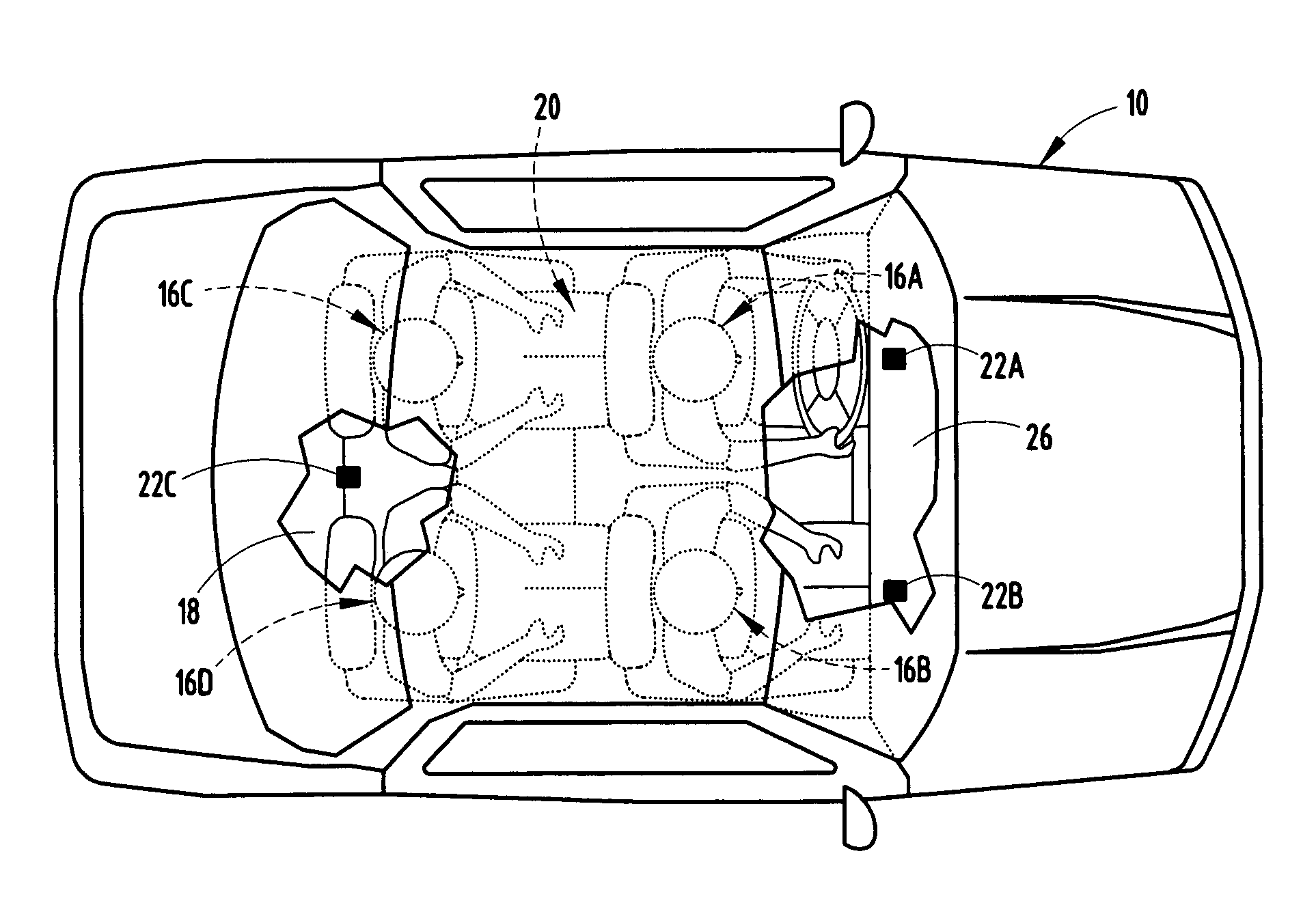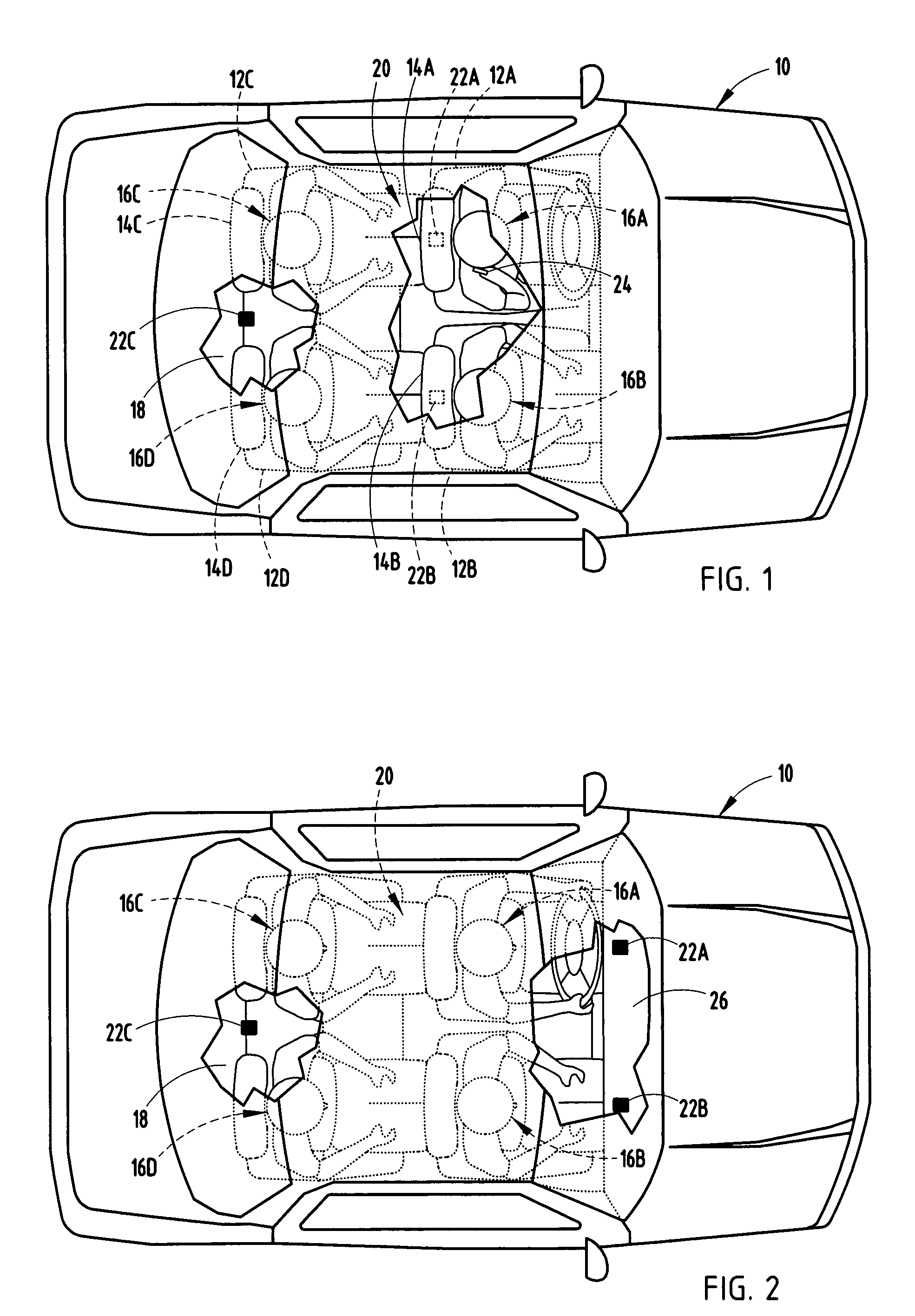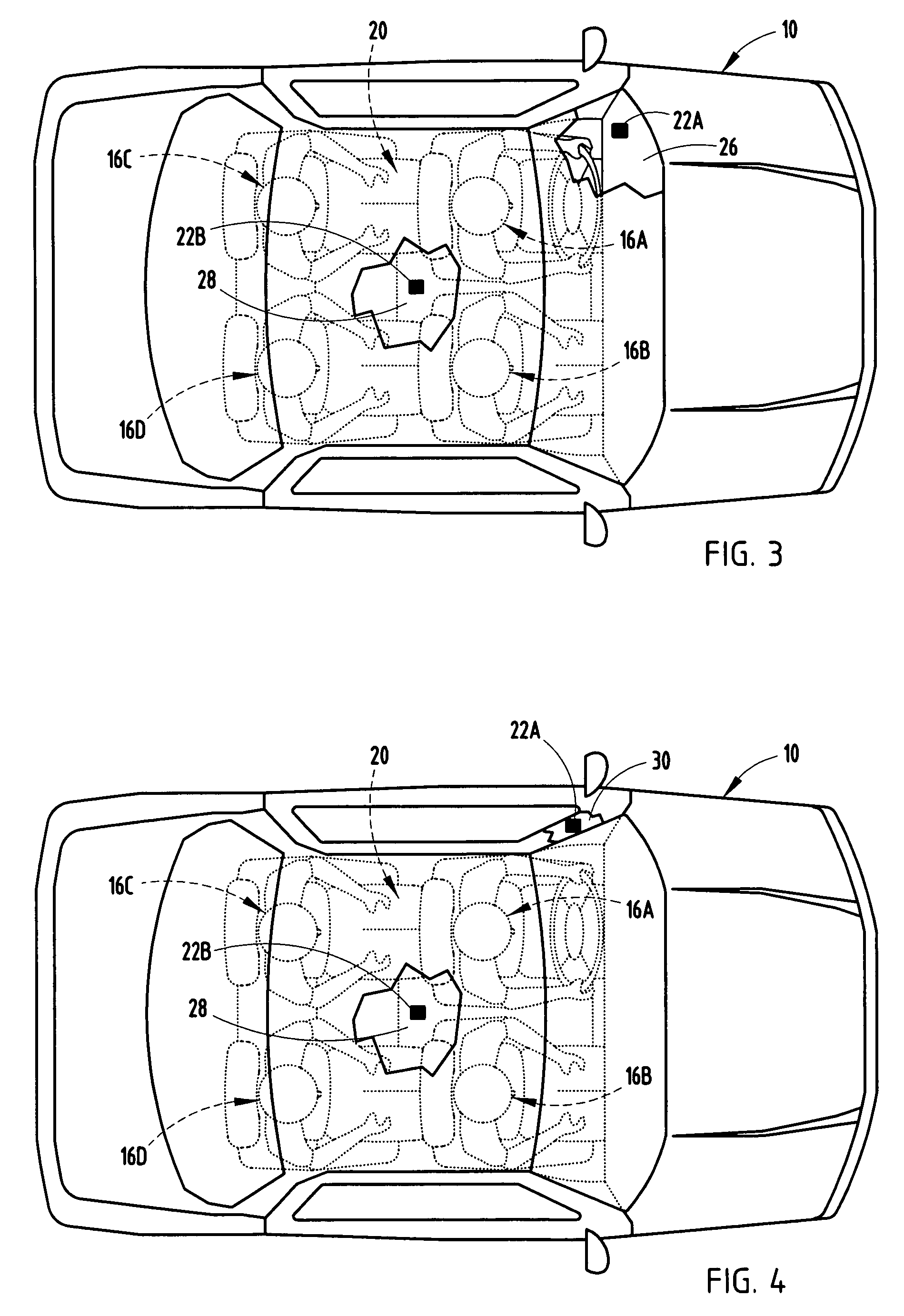Vehicle RF device detection system and method
a detection system and vehicle technology, applied in the direction of transmission monitoring, receiver monitoring, instruments, etc., can solve the problems of reducing driving performance, affecting driving, and limited device functionality to non-driver passengers, so as to reduce driver distraction.
- Summary
- Abstract
- Description
- Claims
- Application Information
AI Technical Summary
Benefits of technology
Problems solved by technology
Method used
Image
Examples
third embodiment
[0027]In FIG. 3, an antenna arrangement is shown employing two omni-directional antennas 22A and 22B, according to a In this embodiment, the reference antenna 22A is located in the instrument panel 26, generally forward of the driver 16A. The other antenna 22B is centrally located in the passenger compartment, particularly in the vehicle headliner 28. In this antenna embodiment, the detection system processing circuitry compares the signal strength of RF power signals received by both antennas 22A and 22B. If the RF power signal strength received at the central antenna 22B is sufficiently greater than the RF power signal strength received at the front reference antenna 22A, the detection system 20 determines that the driver 16A is not using an RF transmit device, such as a cellular phone 24.
fourth embodiment
[0028]A variation of the two antenna arrangement is further illustrated in FIG. 4, according to a The forwardmost reference antenna 22A is shown located in the driver's side A-pillar 30 of vehicle 10. The centrally located antenna 22B remains located in the headliner 28. In this embodiment, the detection system processing circuitry similarly compares the RF power strength received at central antenna 22B to the RF power signal strength received at the front reference antenna 22A and concludes that the driver 16A is not using the phone if the central RF power is sufficiently greater than the front RF power.
fifth embodiment
[0029]Referring to FIG. 5, a dual two-element antenna arrangement is illustrated, according to a In this embodiment, dual two-element co-located patch antennas 22A and 22B are employed mounted in the respective front seat headrests 14A and 14B. Each of the two-element patch antennas 22A and 22B includes first and second receiving antenna elements for receiving RF power signals in corresponding coverage zones, generally shown on opposite sides of each patch antenna. For example, patch antenna 22A receives RF power signals in each of the forward located driver's zone 32A and rearward located rear passenger zone 32B. The antenna element covering the driver's zone 32A is considered the reference antenna. Similarly, patch antenna 22B receives RF power signals in a forward located passenger zone 32C and rearward located passenger zone 32D. The detection system processing circuitry processes the RF power signals received in each of zones 32A-32D to determine use and location of an RF tran...
PUM
 Login to View More
Login to View More Abstract
Description
Claims
Application Information
 Login to View More
Login to View More - R&D
- Intellectual Property
- Life Sciences
- Materials
- Tech Scout
- Unparalleled Data Quality
- Higher Quality Content
- 60% Fewer Hallucinations
Browse by: Latest US Patents, China's latest patents, Technical Efficacy Thesaurus, Application Domain, Technology Topic, Popular Technical Reports.
© 2025 PatSnap. All rights reserved.Legal|Privacy policy|Modern Slavery Act Transparency Statement|Sitemap|About US| Contact US: help@patsnap.com



